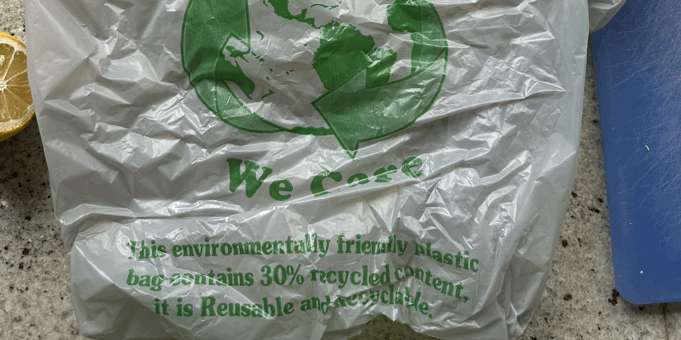Considering “going green” and buying environmentally safe products? The Better Business Bureau (BBB) posted the following message to alert consumers to watch out for green marketing claims that sound great but may be misleading.
According to the Federal Trade Commission (FTC), many marketers use “greenwashing”—the act of misleading consumers regarding the environmental benefits of a product—to convince consumers their products are environmentally friendly. The FTC advises consumers to look for specific information on packages and products that explain why the product is green.
So, how do you differentiate real “green” products from those claiming to be eco-friendly? BBB and the FTC advise consumers seeking green products to watch out for the following red flags:
- Products advertised as “Free Of.” Companies that use claims such as “free of,” “non-toxic,” or “ozone-friendly” may be a concern. Products that are “free of” a chemical or ingredient should be able to prove that the product doesn’t have any more than a harmless trace amount of it—and that the product is free of any other ingredient that poses the same kind of risk. If a product states that it is “non-toxic,” the product should have proof that it’s safe for both humans and the environment or should specifically state which one the claim applies to.
- Products that claim to use less waste. A company stating its product produces less waste should have an example, statistic, or comparison to support its claim. The label should use language like “package is made from 85 percent post-consumer recycled material.”
- Biodegradable or compostable material. Many products claim to be “degradable” or “biodegradable,” which means they break down into natural elements when exposed to light, air, and moisture. Others claim to be compostable, which means they should break down in a home compost pile. If a product says it’s degradable or compostable, the company should have proof that it will break down completely.
- Made with renewable materials, renewable energy, or carbon offsets. Manufacturers should be able to tell you what percentage of the product or packaging was made using renewable materials or energy.
- Official-looking seals and certifications. Some products may contain official-looking seals and certifications with words like “Earth Smart.” But what does that mean? Look for information on packaging that indicates the company’s connections to the organization behind the seal. Consider doing some research on the seal and organization online.
For more information visit BBB’s green HQ for more tips on reducing your carbon footprint.

Though this takeout container looks recyclable with its name “Earthchoice,” it is made of mineral filled polypropylene, a materials that cannot be recycled.

This paper takeout container looks eco-friendly with its unbleached brown paper and may even have a “recyclable” label on the botton, but it is lined with polyethylene plastic and cannot be recycled. There are compostable ones that look similar with a compostable label. These use a compostable plastic lining and can be composted.


Recently on Twitter